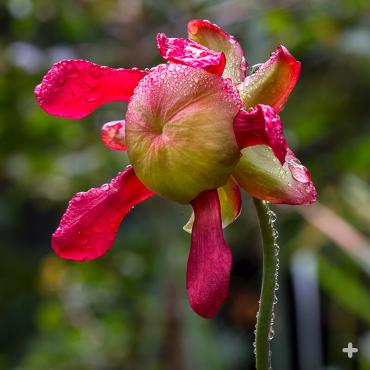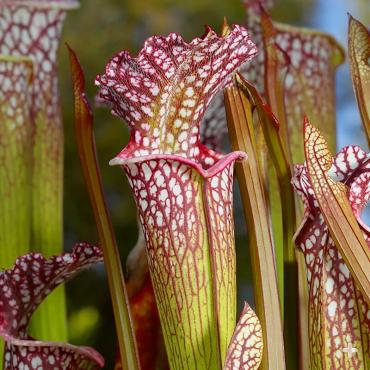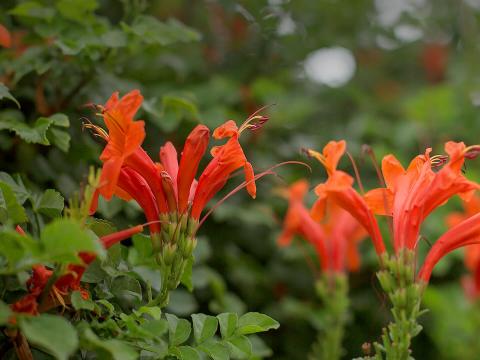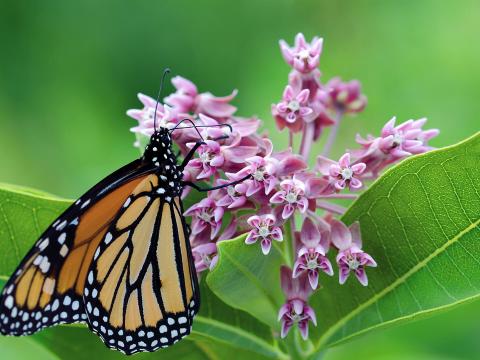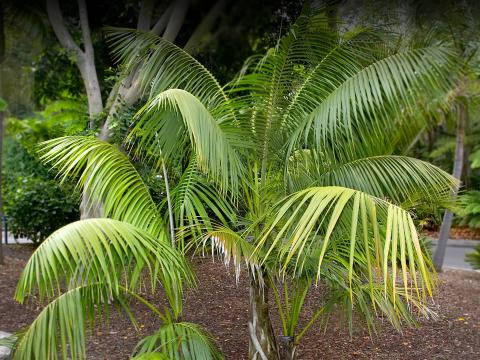American Pitcher Plant
- DIVISION: Magnoliophyta
- CLASS: Magnoliopsida
- ORDER: Nepenthales
- FAMILY: Sarraceniaceae
- GENUS: Sarracenia
- SPECIES: Between 8 and 15, with several subspecies
OVERVIEW
Between 8 and 15 varieties (botanists can't seem to agree) of American pitcher plants can be found from Texas wetlands and the swamps of Florida to the marshes of southern Canada. Most, though, have very small ranges, because they grow only in permanently moist areas like swamps, lake edges, riverbanks, bogs, fens, marshes, and springs.
Color, nectar, and a delicious scent lure insects into this plant's pitfall trap. Drunk on the plant's intoxicating nectar, an insect slides down into the slippery tube. Downward-pointing hairs within the pitcher ensure that it can't crawl out. At the bottom of the pitcher, a pool of digestive acids and enzymes slowly dissolve the insect's body. The pitcher plant absorbs precious nutrients—nitrates and phosphates—from its prey, which can be ants, flies, wasps, bees, beetles, slugs, and snails.
CHARACTERISTICS
It looks like a flower, and (to an insect) it smells like a flower—but it's a trick! This plant's "pitchers" are actually specialized leaves that grow in a funnel shape. The lip of the pitcher releases secretions that attract its tiny prey. A "hood" extends over the top of the pitcher and prevents rainwater from filling it up and diluting the lethal brew inside.
Pitcher plants are herbaceous perennials; they blossom in spring, then wither and go dormant in winter. They grow in clumps and can spread to several feet in diameter. Depending on the variety, pitchers can be 6 inches to more than 36 inches tall.
CULTIVATION
Interested in growing your own carnivorous plant garden? You might want to start with an American pitcher plant. Experts say that they are among the easiest carnivorous plants to grow, but do your homework to see which nursery-propagated cultivars grow best in your area.
American pitcher plants, shipped to England, were popular in British gardens in the 19th century.
CONSERVATION
This plant's wetland habitat is shrinking quickly, and for a variety of reasons. Invasive plants such as kudzu vine have changed many wetland habitats, and herbicides kill wetland plants. In some places, recreation areas, housing, and agriculture have replaced wetlands.
One species and two subspecies of American pitcher plants are on the US Endangered Species List, and at least one other has been assessed is vulnerable. In spite of federal—and in many cases, state—protection, illegal plant collectors sometimes still take plants and seeds from the wilderness.
Responsible gardeners can purchase nursery-propagated pitcher plants, which are grown from cultivated stock. Be sure to question your nursery about the origin of a pitcher plant before you buy it.



